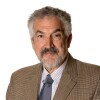It came as no surprise to learn that the lead suspect as the Washington, D.C.-area sniper is John Allen Muhammad, an African-American who converted to Islam about 17 years ago. Nor that seven years ago he provided security for Louis Farrakhan’s “Million Man March.” Even less does it amaze that he reportedly sympathized with the 9/11 attacks carried out by militant Islamic elements.
All this was near-predictable because it fits into a well-established tradition of American blacks who convert to Islam turning against their country.
Of course, this is not a universal pattern, as some of the roughly 700,000 African-American converts to Islam are moderate and patriotic citizens. One well-known example is Kareem Abdul-Jabbar, the basketball player; another, jazz pianist McCoy Tyner.
In brief, there is nothing inherently antagonistic between the faith of Islam and good American citizenship.
Converts most likely turn anti-American when they adhere to either of two specific forms of Islam: either the Nation of Islam (NoI, the black-nationalist sect that originated in Detroit in 1930) or militant Islam (mostly imported from the Middle East and South Asia).
The pattern of alienation goes back decades. From the 1940s onward, NoI’s longtime leader, Elijah Muhammad, told his followers “You are not American citizens” and he spent years in jail for draft evasion during World War II. In the 1960s, the NoI’s most famous convert, boxer Muhammad Ali, refused to be drafted and fight in Vietnam.
Other NoI leaders have spoken with intense hostility against their country. Malcolm X dismissed his American passport as signifying “the exact opposite of what Islam stands for.” Louis Farrakhan announced that “God will destroy America at the hands of Muslims.”
But African-Americans who adhere to normative Islam also have a pattern of alienation from the United States:
- After breaking from the NoI, Malcolm X proclaimed, “I’m not an American.”
- Jamil Al-Amin, once known as H. Rap Brown and now in prison for murdering a policeman, wrote that “When we begin to look critically at the Constitution of the United States . . . we see that in its main essence it is diametrically opposed to what Allah has commanded.”
- Mahmoud Abdul-Rauf, a National Basketball Association player, refused to stand during the playing of the national anthem on the grounds that the American flag is a “symbol of oppression, of tyranny.”
- Imam Siraj Wahhaj, one of the country’s most prominent Muslim leaders, calls for replacing the U.S. government with a caliphate.
And American converts who fought the Soviets in Afghanistan during the 1980s imbibed a vision of destroying both superpowers. One such jihadist explained in 1989: “It is the duty of all Muslims to complete the march of jihad until we reach America and liberate her. And I will be a guide for them.”
Nor are these sentiments confined to words alone:
- The U.S. attorney for New York listed Wahhaj as one of the “unindicted persons who may be alleged as co-conspirators” in an attempt to blow up New York City landmarks.
- Clement Rodney Hampton-el of New Jersey returned home from fighting the Soviets in Afghanistan and joined a gang that in February 1993 bombed the World Trade Center.
This well-established pattern of alienation, radicalism and violence among black American converts to Islam suggests two points, should John Allen Muhammad in fact be implicated in the D.C. sniper attacks.
First: The troubling coincidence of conversion to Islam and hatred of the United States needs to be looked at very closely. To what extent does Islam attract the disaffected, to what extent does it actively turn them against their country? Probing the source of the disaffection that can inspire terrorism has important security implications.
Second: To what extent does the rhetoric and example set by prominent figures such as Louis Farrakhan and Siraj Wahhaj influence followers like the alleged sniper to engage in violence? If it does, given that this is wartime, do steps need to be taken to curtail their rhetoric?
That one should even have to raise these issues points, yet again, to the unpleasant realities that Americans must confront if they want to win the war on terror.
Oct. 29, 2002 update: I focus on the media coverage of this topic at “The Snipers: Crazy or Jihadis?”
Aug. 19, 2003 update: I look more at “The Beltway Snipers’ Motives” in a weblog entry by that title.
Aug. 27, 2003 update: Writing in the New Yorker, Adam Gopnik reports that Bernard-Henri Lévy writes in his new book, Qui A Tué Daniel Pearl? (Who Killed Daniel Pearl?), that “John Allen Muhammad, the Washington sniper . . . had transferred from the Nation of Islam to Gilani’s sect shortly before he began his killing spree.”
Oct. 22 2005 update: For more on the Gilani connection, see “No Terrorist Attack on US Soil Since 9/11?” at Gates of Vienna.







